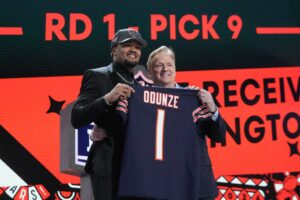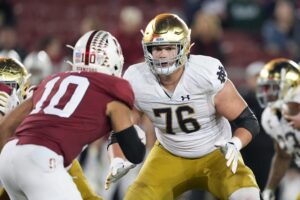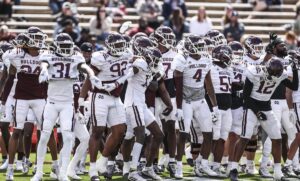The NCAA has been busy this week. First it was the revealing of the plan for scholar athletes to own the right to their Name/Image/Likeness. Then, over the weekend the NCAA releases a Fall Sports Plan. It is guidance on what would be needed to get football and other sports back during the Fall academic period.
In the media business, when an entity drops a piece of news in the late afternoon/early evening on a Friday, we call it the “Friday News Dump.” They are usually hoping to get it past reporters and editors with little notice as they head into the weekend. Why would the NCAA put its plan out on a Friday? The only reason we can think of is the name. Friday night, the NCAA released the “Core Principles of Resocialization of Collegiate Sport.” That would be the CPRCS for short, we suppose. Few entities need more PR help than the NCAA.
NCAA Releases Fall Sports Plan
The plan is both simple and complex at the same time. Simply put, if every state were at the same level of dealing with the COVID-19 virus, and the outbreaks were at the same pace by state, sports could come back to team workouts in as little as six to eight weeks. Of course, none of those things are happening on a state by state basis, so the complexity kicks in.
The plan follows many of the guidelines set down by Dr. Anthony Fauci and the National Institutes of Health for state by state guidance. There is one overwhelming distinction with the NCAA plan as it pertains to sports. If it is not safe for students to return to school en masse, then sports are out of the question.
The Goals
The NCAA plan has nine steps and three phases which tend to overlap each other significantly. Among the steps are a requirement of at least a 14-day period of downward trending in COVID-19 cases within the given state; a plan by the university/college for a resocialization of all students. This includes the ability to provide for on-campus social distancing, temperature checks, and testing and isolating; a resocialization for all athletics staff/personnel including the previously mentioned safety measures; the availability of rapid diagnostic testing for any and all athletes as well as staff; an oversight system so that newly identified cases can be isolated away from the rest of the student population immediately; and a written risk analyses assessment for each school. It also requires that area hospitals be able to handle the current pacing of cases without being stretched beyond reasonable abilities.
The three phases lay out much like the NIH plans, with tweaks made for concepts like dorm living and on-campus activities.

The Steps
Phase One can happen once schools have met the above requirements for getting students and staff back to school. It also includes no gatherings of 10 or more, virtual meetings whenever possible, continued physical distancing and a request that all vulnerable populations continue to shelter in place. Non-essential travel may resume, albeit at a minimized level, which would indicate recruiting can pick up again. It also suggests gatherings in gyms or common areas like dining halls remain off limits. It also urges that athletes, coaches, and staff with underlying health issues such as high blood pressure, age-related vulnerabilities, diabetes, or obesity should not participate yet. Do you realize how many coaches there are in this country age 60+ who would be in the high risk category?
Phase Two can only happen after 14 or more days of the first phase. It does loosen restrictions slightly, such as now being able to have gatherings of up to 50 people. Virtual meetings are still recommended, and the reigns are taken off of travel.
Phase Three comes after a minimum of two weeks of the second phase being successfully fulfilled “with no evidence of a rebound” of Coronavirus. Schools could then open all facilities with no restriction as to the numbers of people at one time. Gyms, dining halls, and other common gathering area could resume their normal practices. Unrestricted staffing could also resume.
The concept concludes with notes about the severity of COVID-19. The guidelines talk about how transmittable it is, and how common strains of influenza do not have the fatality rate of the Coronavirus.
The Reality
The plan sounds doable until you take a step back and realize that every state is dealing with the virus, the stay-at-home orders, and the re-opening of businesses in completely different ways. The idea of opening hundreds of DI, DII, and DIII campuses across the country in any unison fashion in order to have Fall sports start on time is pure fantasy.
Purdue University was one of the first colleges to declare that it will be open for normal business and academic endeavors in the Fall. School president Mitch Daniels declared the COVID-19 virus “poses close to zero lethal threat” to young people. Of course that is not scientifically accurate. But the state of Indiana, as of this publishing, has had a reported 17,835 cases. That equals only 1.5% of the national total. The number of deaths, 1,007, is the same 1.5% of the national total. The state’s biggest spike in reported cases came on April 26th, with just under 1,000 for that day.

In order to comply with the sports plan from the NCAA, Purdue would be able to move to phase one on May 10th. That is provided there is no uptick in cases at any level between now and then. It would then take a minimum of six weeks to get through all of the steps, based on continued downward trend in cases.
The States
SEC commissioner Greg Sankey has indicated, since states in his geographic purview are opening before others, it is conceivable that they could play football whether other states are ready or not. Sure. But not really. Only if they are willing to completely thumb their collective noses at the safety guidelines. And who knows, maybe they are for the sake of having Saturday college football back.

The state of Tennessee was swimming along, averaging about 478 cases per day through April 26th. The state loosened the stay-at-home laws and had 1,156 newly reported cases on May 1st. By the NCAA standards, they now have to start all over towards that 14-day period of lowering cases. Alabama has not had such problems, (the state, not the university). Their high for reported cases was back on April 9th at 341, and they have trended mostly downwards since. Maybe Commissioner Sankey is looking at a round robin tournament that would include Auburn, Alabama, and the University of Alabama-Birmingham.
Florida, (the Gators belonging to the SEC), was down to a reported 306 new cases on April 25th. They went back up to 1,038 on May 1st. Prior to that, they had 3% of the national cases, and 2% of the deaths. Within the state, 3.7% of those who got the virus, died. Those are totals to the state ceasing reporting the state death numbers to the Johns Hopkins data base last week.
The Pragmatism
After hearing from several coaches and school administrators over recent weeks, one thing is clear. That is that nothing is clear. Coaches and administrators from same schools are professing differing opinions on what happens to the college football season.
It is unlikely the SEC plays by itself, no matter how much the schools see themselves as above the rest of the nation anyway. Texas A&M coach Jimbo Fisher says he feels it would be desperate to play the game without fans and no one should be that desperate. UCLA’s Chip Kelly told us in an interview last month that if it is not safe for the students to be back on campus, it is not safe for his players to be around either. He also warned about the dangers of starting the season prematurely, and having players or fans get sick. The likelihood of shutting it down again would likely result in a much longer closure of the sport.
Coaches across the country have agreed they need six to seven weeks of prep time to get a team ready to play. The standard early September seems unlikely. There have been ideas floated about moving it to the Spring, but too many elite players would opt to sit out instead of risking an injury right on top of the NFL Combine or Pro Days schedule. A pushed back start to some time in October seems the most likely at the moment. The schedule would be compressed to get everything in by the second week of January just as it is now.
In the meantime, we now have the NCAA’s “profound” CPCRS guidelines, which few states are even close to meeting.






